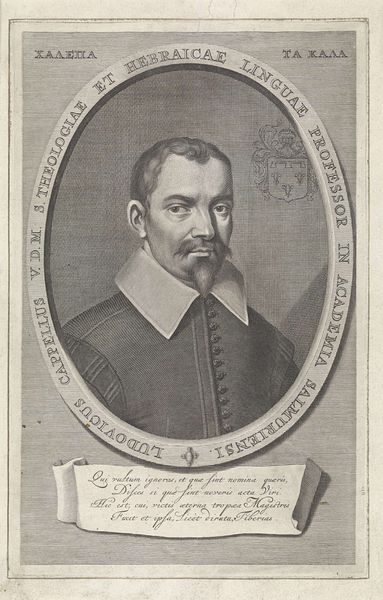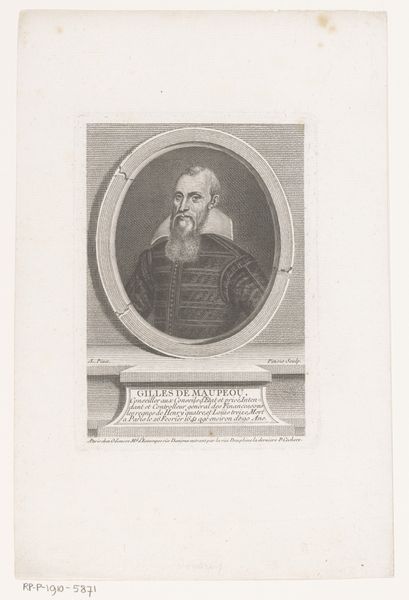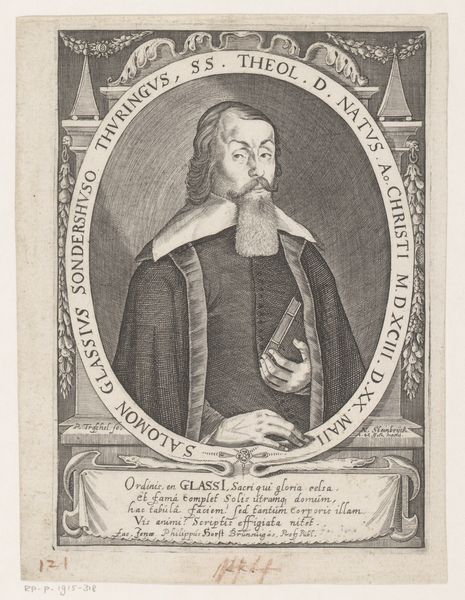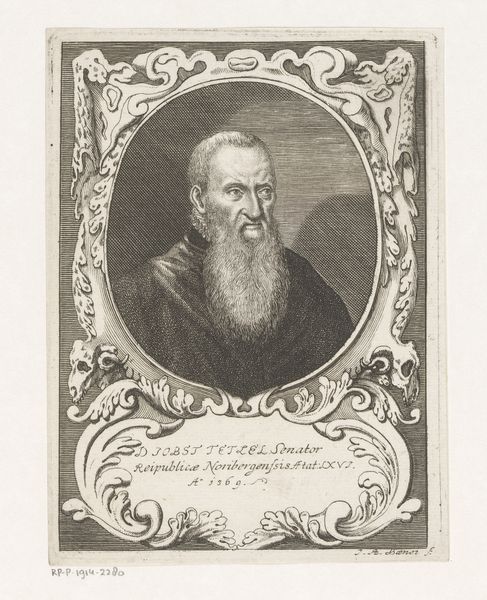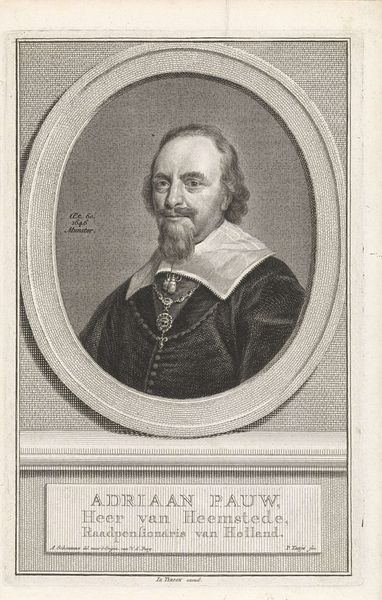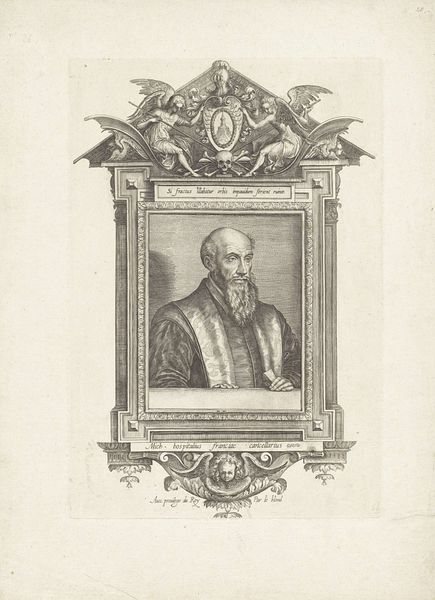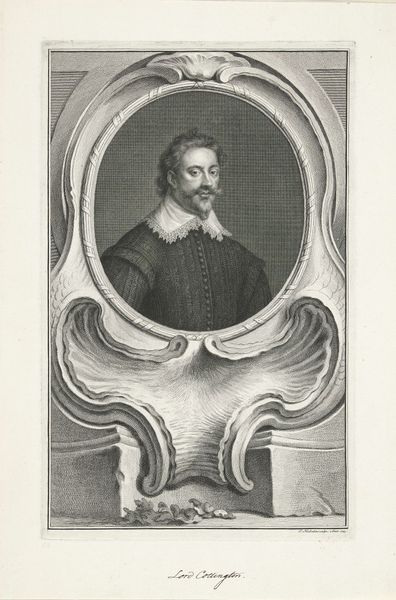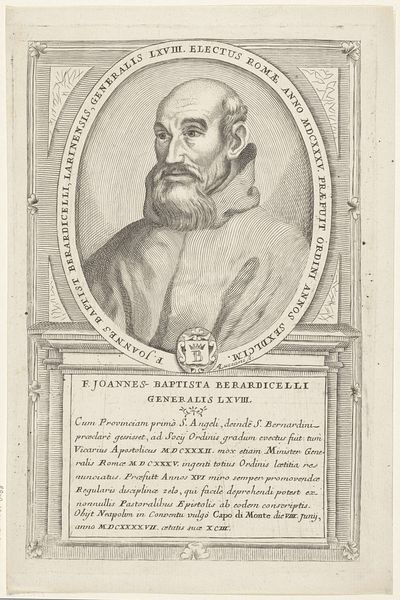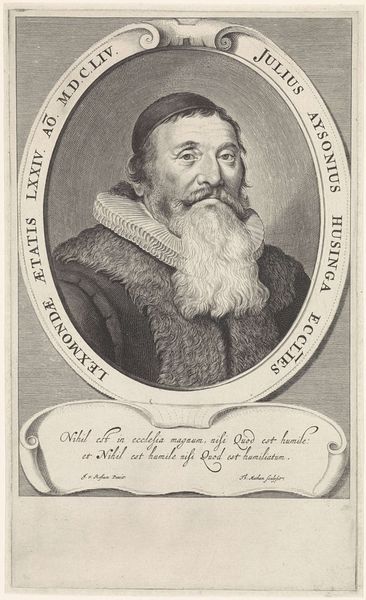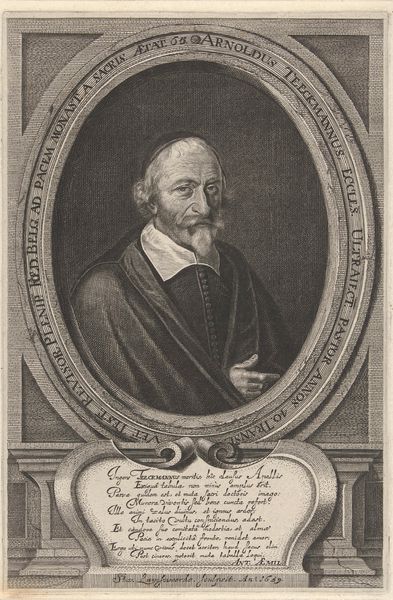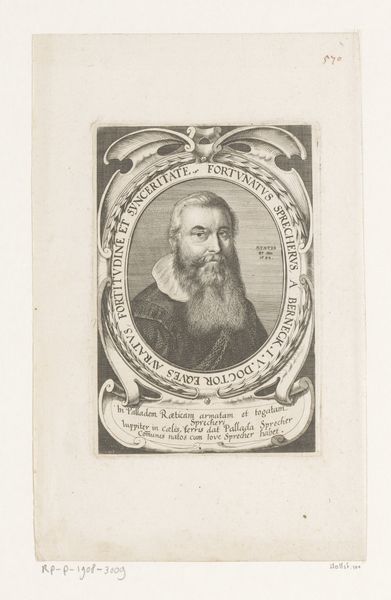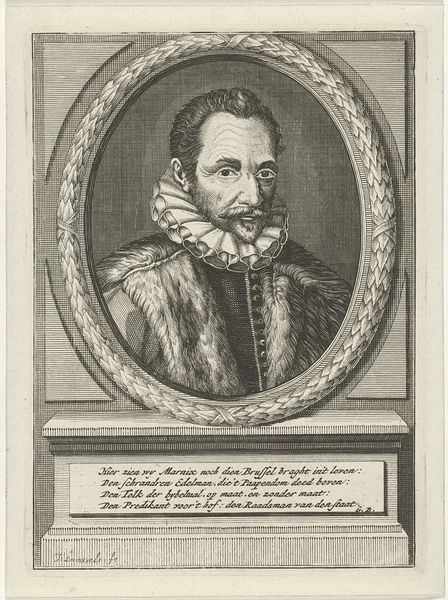
print, engraving
#
portrait
#
baroque
# print
#
engraving
Dimensions: height 306 mm, width 181 mm
Copyright: Rijks Museum: Open Domain
This print of Isaac Casaubon was made by Pieter van Gunst, probably in the early 1700s, using the technique of engraving. This is an intaglio process, where lines are cut into a metal plate, which is then inked and pressed onto paper. Look closely, and you'll see the crisp, sharp lines that are characteristic of this method. The engraver's skill lies in their ability to translate an image into a series of marks, controlling the depth and spacing to create tonal variation. Light and shadow are built up through dense clusters of lines, or opened up by leaving the paper blank. In Van Gunst’s time, prints like this were essentially a reproductive medium, a way of disseminating images widely. But it is important to remember that each impression still required considerable labour. The engraver acted as a kind of proto-industrial worker, creating multiples of an image for a growing market. So while the portrait may seem straightforward, it's also a testament to the skilled hand and the economics of image production in the 18th century.
Comments
No comments
Be the first to comment and join the conversation on the ultimate creative platform.
